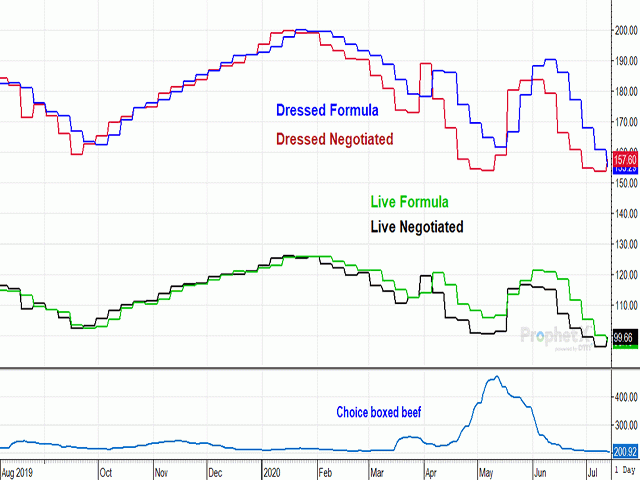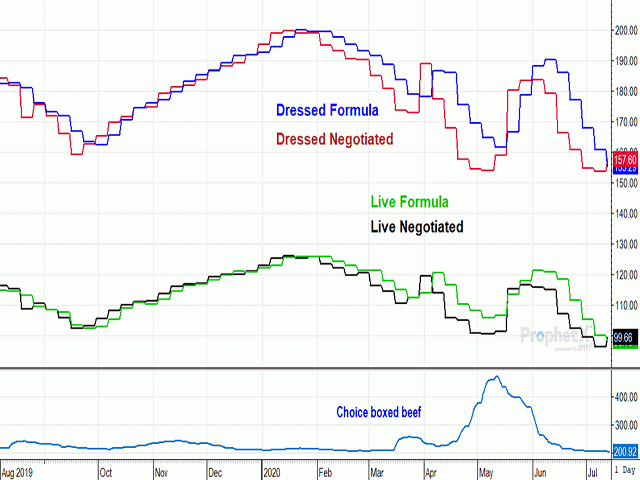Sort & Cull
Cash Cattle Prices Reveal Interesting Pattern
Cash cattle markets have seen incredible market swings over the last three months. Packer and meat distribution issues have been seen through the COVID-19 pandemic, causing significant disruptions to the livestock market. The difference between formula and negotiated cash cattle trade has also continued to see wide shifts over the last four months, putting the focus on the way packers purchase cattle from feedlots.
As seen in the chart that coincides with this article, the price levels between formula and negotiated cash cattle prices remain very narrow from a historical perspective, with price levels within $1 per cwt of each other through the last quarter of 2019 and into 2020. However, once concerns about beef market disruptions and surging boxed beef values developed during the month of March, price spreads became extremely wide. At the highest point in mid-June, formula dressed cash cattle prices held a $19.70 per cwt premium to negotiated trade, with live formula trade $11.19 per cwt higher than negotiated trade levels. Current price levels at the end of last week are showing that premium levels for formula trade has eroded, with negotiated trade values averaging $2 per cwt higher than the formula alternative. This relationship has developed in both live and dressed cattle trade as choice boxed beef values have stabilized near $200 per cwt. These boxed beef values are similar to levels seen before COVID-19 brutally disrupted the market.
P[L1] D[0x0] M[300x250] OOP[F] ADUNIT[] T[]
Traditionally, when negotiated trade is steady to higher than formula cash cattle prices, slight to moderate supply tightness is indicated. Although the current backlog of cattle seen through the industry and previous reductions of slaughter levels has changed the dynamic of market structures, this pattern may become more evident as packers work to maintain daily and weekly slaughter levels akin to year ago levels. Daily slaughter rates remain near 120,000 head.
These levels are still below the aggressive early spring levels and have not made up for the losses seen during March and April, but current daily runs are generally steady to 2,000 head per day lower than year-ago levels. This will continue to put the focus on packers' need to gain access to cattle through the rest of July and well into the fall months.
The high temperatures through the week has helped to stimulate buyer support and may cause the wide price premiums for formula traded cattle to become nonexistent over the near future. In general, as negotiated trade remains at or above formula prices, tighter supplies should start to develop. This diversion in chart trends flies in the face of expectations that cattle supplies will be burdensome over the coming weeks. However, with a combination of falling slaughter weights and spread reversals in negotiated trade charts, the potential for tighter market-ready cattle could help support prices in the next several weeks.
With cash cattle prices in both negotiated and formula-based trade remaining at a strong discount to futures trade, it is clear that "normal" market relationships have not redeveloped.
Rick Kment can be reached at Rick.Kment@dtn.com
© (c) Copyright 2020 DTN, LLC. All rights reserved.





Comments
To comment, please Log In or Join our Community .